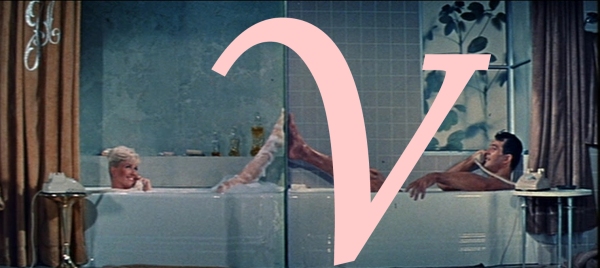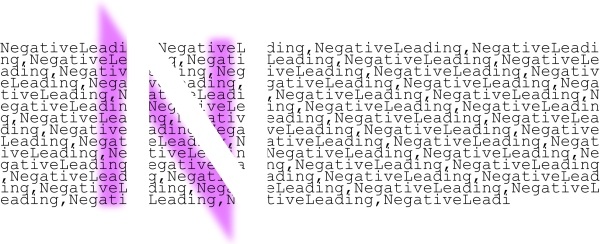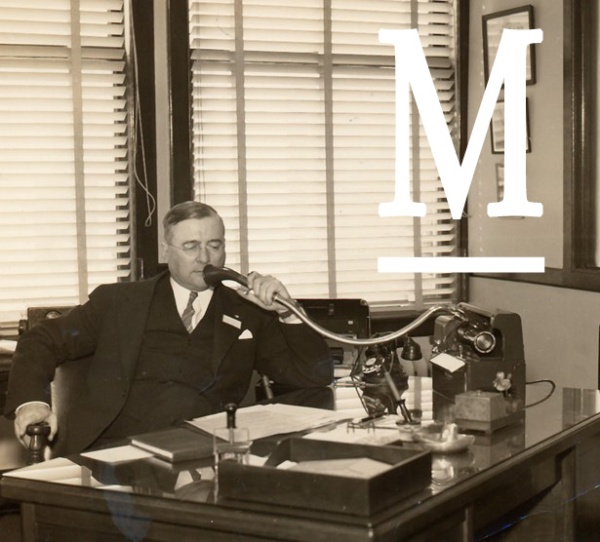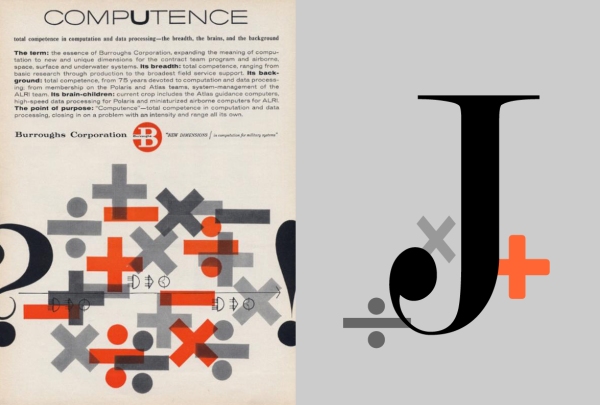Contributing editor: Clare Murphy Recently, while chatting with a work colleague — a fellow editor — during work time I found myself logging that this minor, otherwise-undocumented act of defiance was going some way toward disproving the possible apocalyptic outcome of our conversation. The colleague, who’s been friend enough to drink with me and unwind... Continue Reading →
Invisible mending tip – “Y” is for yes
Print this out and stick it above your workspace to remind yourself of these words. Contributing designer: Laura Strange Sometimes, it's easier to say no to an opportunity. Time, pressure to perform and other personal issues often stop us pursuing opportunities that could really help us excel in our career. Sometimes, you need to just... Continue Reading →
Invisible mending tip – “X” is for Control+X and Document X plus one
Contributing writer and editor: Fiona Crawford I’m a writer’s-blocked rampant overwriter. Which is why X is for two things—Control+X and the mysterious-sounding Document X. Together with their mate Control+P, this able trio enables me to repeatedly fling myself across deadline finish lines. Control+X (the friendlier friend of Delete) and Control+P are the respective keyboard shortcuts... Continue Reading →
Invisible mending tip – “W” is for writing
Contributing writer: Stuart Glover W: writing, n. A task that is held to be of great significance, that is announced when it is to be attempted, explained away while it is being done, but rarely actually undertaken. When it is undertaken, progress is slower than we confess, the task harder than we admit, and the... Continue Reading →
Invisible mending tip – “V” is for voice
Contributing writer: Tracey Sargent "V" is for voice — your character's voice ... When it comes to fiction, knowing as much as possible about your characters before you start writing will ultimately help your words to flow, and allow you to develop a clear vision of the people who will eventually inhabit your story. While these details are... Continue Reading →
Invisible mending tip – “U” is for unobtrusive
Contributing editor: Helena Bond "U" is for … … underline, which we so rarely do, unless to suggest italics to you; … usage, which we staunchly uphold: for grammar turns leaden writing to gold; … urgent deadlines to meet, so we change all our plans (and double the fee); … umbrage, which all editors dread,... Continue Reading →
Invisible mending tip – “T” is for topic
Contributing writer: Ronnie Scott Any interesting piece of nonfiction you've read is probably about something else. What do you remember most from Joan Didion's The White Album? Hopefully that creeping sense of maybe-paranoia, the inescapable slowness that builds up across the piece. Most people would say it's an essay about the nature of the 60s.... Continue Reading →
Invisible mending tip – “S” is for self-edit with soft pencil on hardcopy
Contributing editor: Craig Munro By all means revise or edit on screen sentence-by-sentence as you compose, but for a serious self-edit put the text aside for at least a couple of days or a week then work it over savagely with a soft pencil on hardcopy. Craig Munro is a biographer and book historian whose... Continue Reading →
Invisible mending tip – “R” is for read it aloud
Contributing writer: Kelly Ventress Read it aloud — I picked this tip up years ago on a copywriting course, none of the rest of which I can remember at all. It was a winning tip I think, and I use it often when writing all sorts of things. It is such an effective thing to... Continue Reading →
Invisible mending tip – “Q” is for query and question
Contributing writer: Andrea Baldwin Q — Query “Querying” a manuscript is similar to “pitching” a magazine article or screenplay. Treat querying as an artform in itself. A finely crafted query is the key to opening big doors. Learn to query through the Queryshark website — virtually a free online course provided by agent Janet Reid. If... Continue Reading →
Invisible mending tip – “P” is for patterns
Contributing designer: Belinda Stanton Choose the right patterns / styles for the right fabric / content and you will create publications bound in both written and visual perfection. Belinda Stanton is an artist and designer residing in Brisbane http://www.belindastanton.com.
Invisible mending tip – “O” is for obsessive
Contributing writer/editor: Lorelei Vashti "O" is for obsessive. Which came first: the mad, crazed glint in one's eye or the editing career? It doesn't matter because they're one and the same. Only an obsessive could spend most of their life working on the page, transforming other people's words into better versions of themselves so the... Continue Reading →
Invisible mending tip – “N” is for negative leading, not for the faint-hearted
Contributing designer: Dione Carroll The amount of white space we add between lines of text is called leading and it greatly affects the readability, feel, and density of blocks of text. Leading should be given the attention it deserves and this will depend on typeface, size and amount of copy. A general recommendation is to set... Continue Reading →
Invisible mending tip – “M” is for management
Contributing editor: Angel Huang Management is quite a broad topic for an A–Z guide; while there are plenty of things in life that are outside your control, the impact of those on your editorial work can be minimised if you try your best to manage these three things: 1. Time Managing your time well can usually... Continue Reading →
Invisible mending tip – “L” is for length
Contributing editor: Justine Gannon Less is more Learn from Coco Chanel who said, “Before you leave the house, look in the mirror and take one thing off”. Apply this lesson to your writing. Let it go. Leave it out. Lift it off. Lighten it up. Love of the long word “It need hardly be said... Continue Reading →
Invisible mending tip – “K” is for kerning
Contributing graphic designer: Teresa Prowse What comes under “K” in the A–Z of style? Well … the first thing which pops into my designer mind is “kerning”. Originally, I thought this was a little obvious and basic but when it comes down to style, kerning plays a very important role. Basically, kerning is the process... Continue Reading →
Invisible mending tip – “J” is for jargon
Contributing writer: Gerard Ross "J" is for Jargon, init? What does complex, meaningless jargon have in common with narrow text columns? They're both hard to justify. Boom, boom. A former colleague — an erstwhile gent of encyclodpaedic knowledge; a constant reader of restless intellect and Hitchensesque recall — though somewhat mentally bulimic, in that his... Continue Reading →
Invisible mending tip – “I” is for incubate
Contributing writer: Luke Beesley “I” is for incubate — let fresh sentences sit awhile. A fair, comfy while. This is particularly so for creative writing (of course ignore all this if you have a deadline) but as soon as I've written a first draft, as much as I might feel (or think) I know how... Continue Reading →
Invisible mending tip – “H” is for hand build
Contributing graphic designer: Zoë Miller As graphic designers, we should often remind ourselves that our work almost always draws inspiration from messy scribbling and creating rough maquettes. In erasing our marks of process we often lose a lot. Zoë Miller is a graphic designer living in Melbourne, Australia: http://www.zoemiller.com
Invisible mending tip – “G” is for gadgets
Contributing writer: Michelle Dicinoski When it comes to writing and editing, there are a lot of gadgets that can help you to be more productive — or distract you from your work. This is true from the most basic tools, such as the word counter in your word processor, up to more sophisticated tools such... Continue Reading →
Invisible mending tip – “F” is for fonts
Contributing writer–editor: Miss Morag Kobez (Frivolous fonts are not your friends.) Miss Morag is a freelance writer, regular contributor to ABC 612 local radio, and reviewer for several Queensland food guides. http://www.missmoragsmorsels.com
Invisible mending tip – “E” is for emotion over technique
Contributing image editor: Raoul Teague Walter Murch — Oscar-winning editor of such films as The English Patient and Apocalypse Now — espoused the following “Rule of Six” when making a cut … In descending order by importance: Emotion Story Rhythm Eye-trace Two-dimensional plane of screen Three-dimensional space of action. In a world of en dashes and... Continue Reading →
Invisible mending tip – “D” is for dashing, debonair and Delores
Contributing editor: Clare Murphy Disclaimer: Dull is what you’ll find this entry if others find you dashing — with flair, modesty and well-founded self-assurance Monday–Sunday. The en dash Physical characteristics In the olden days, just before cassettes became antiques, the en dash measured the same width as the letter “N” on a typesetting block. Today,... Continue Reading →
Invisible mending tip – “C” is for clear and concise
Contributing editor: Judi Carter When expounding your thoughts, be it via chirography, l’ordinateur or other means, apprehensibility, that is, being clear, is of prime importance. If you are fathomable, perusers, whether they be the great unknown, your brother’s sister, or Milo who sits in the pod next to you at work and eats tuna out... Continue Reading →
Invisible mending tip – “B” is for bullets
Contributing editor: Glenys Higgs B is for bullets, also known as: bulleted lists dot points itemised indented material (thanks for that one, Snooks). My tip is a geeky one for those keen to make our friend Microsoft Word (specifically Word 2007 and 2010) play nice. Have you ever set up a couple of bullet styles... Continue Reading →
Invisible mending tip – “A” is for analysis, audacity and audience
Contributing editor: Matt Linton "A" is for Analysis, Audacity and Audience. Editorial work calls for these three things. Analysis Each job is the same. Each client is different. In a perfect world each job would finish with a well-structured text, articulated with precision, that connects with the audience. But we don’t live in this perfect... Continue Reading →


























